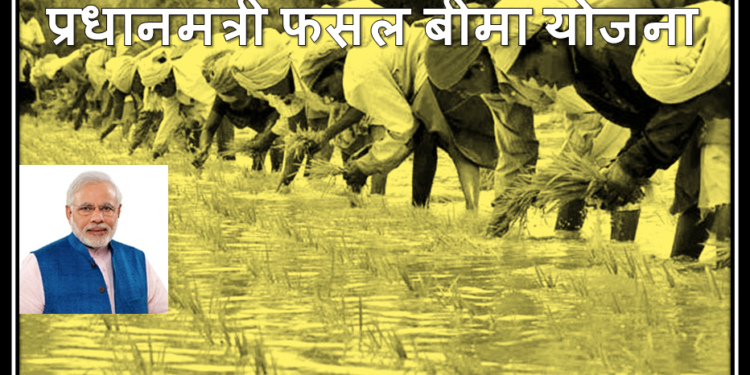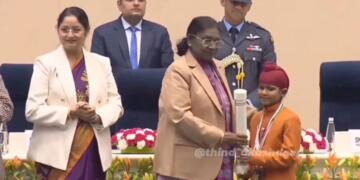On 13 Jan 2016, the ‘Pradhan Mantri Fasal Bima Yojana’ scheme was approved. We delve into the key features of the scheme and provide an understanding of impact that can occur.
In 2014 a detailed note was published on implementation of the Crop Insurance Schemes which highlighted some abysmal performance of previous crop insurance patterns till date.
Crop insurance in India: A History of Epic Failures
It took India until 1979 to come up with something (I would highlight SOMETHING) concrete or lets say a way forward to for undertaking crop insurance. In the following table, we try to summarize the evolution of crop insurance in India from 1947, what the schemes were, their impact and noted shortcomings:
| Period | Scheme | Impact / Comments / Shortcomings |
| First decade | Crop insurance was discussed in 1947 by the Central Legislature, and the then-Minister of Food and Agriculture, Dr Rajendra Prasad, gave an assurance that the Government would consider the feasibility of introducing crop and cattle insurance. | Two pilot schemes prepared were circulated among different States for adoption, but they were unwilling to operate the schemes because of resource constraints. No Major Impact |
| Second decade | Crop insurance again received attention at the time of formulation of the Third Five-Year Plan (1961–66), but the Working Group on Agriculture was not in favour of recommending its inclusion in the Plan. Interestingly, the Government of Punjab proposed the inclusion of crop insurance in its State Plan and sought financial assistance from the Central Government. | In 1971, a GoI committee concluded that it would not be advisable to introduce crop insurance in the near future because of the financial burden on the public exchequer. Thus after two decades of deliberations and debate, the possibility of introducing crop insurance in independent India appeared to have receded. |
| Third Decade | Seminal work by Prof. V. M. Dandekar strongly advocated for Crop Insurance in 1976 | Some semblance of revival of Crop Insurance (~29 years after independence) |
| 1973-76 | Experimental crop insurance started in Gujarat and Maharashtra along with similar schemes in AP, TN and WB with coverage ~3000 farmer | Some efforts made in the direction |
| 1979-85 | Based on Dandekar’s working GIC* set out scheme on pilot basis covering ~4,47,000 farmers | Scheme discontinued in 1985 |
| 1985-86 | Comprehensive Crop Insurance Scheme First major crop insurance program (after 40 years of independence) covering: 1. Covered cereals, pulses & oilseeds 2. Credit linked only 3. CCIS was compulsory 4. Area based approach | Given the scheme was Credit Linked, the penetration was very low. Initial coverage of 3.85 mn farmers and 7.69 mn hectares of gross cropped area (GCA). Increasing to 5.58 mn farmers and 8.97 ha GCA by 1998-99. During 1998–99, 5.6% of farmers were covered, as was 5.6% of GCA. For the 29 seasons (1985–86 to 1999 Kharif)-the sum insured, premium and indemnity were to Rs 24,975 cr, Rs 403.5 cr and Rs 2,319 cr, respectively; making entire project unviable. Multiple frauds, inefficiencies crept in, which were left unchecked. |
| 1992 | Experimental Crop Insurance Scheme Tried to be not credit linked and operated in 1997-98 rainy season in AP, Assam, Karnataka, Orissa & TN. | Indemnity turned out to be INR 37.8 cr., while premiuQm at 2.80. Scheme was discontinued due to non-viability |
| SOME BETTER SCHEMES | ||
| 1999 to 2013 | National Agriculture Insurance Scheme (NAIS) CCIS, ECIS discontinued and NAIS brought in. For first time a better scheme was brought in covering: 1. Covering all states & UTs 2. Compulsory of loan cases & voluntary for others 3. Food crops, oilseeds & commercial crop covered 4. Sum Insured = 150% of average yield 5. Differential premium 6. Only 50% premium subsidy, to be phased out over 5 years 7. Loss only sowing to harvesting & area based loss assessment and not localized 8. Indemnity based on risk level 9. Sharing in state and center at 50:50 | During 12 years benefited 53.89 mn farmers and ~307.64 mn ha of GCA insured. Sum insured Rs. 2,83,720 cr Premium Rs. 8,458 cr Claim Rs. 27961 cr Claim ratio 3.31x Loss cost 9.86% This scheme was a bit unviable however, overall coverage was great Main Issues: Multiple implementation issues ranging from delay in payment to farmers, premiums higher, scheme for only loan taking farmers, post harvest loss not covered, lower total yield reducing sum insured, higher premium in horticulture & commercial crops, no localized consideration, no individual claim assessment, no time schedule for payment of sum insured / claim, inadequate manpower to check scheme implementation, incorrect legal cases, no use of technology for crop estimation, among others. |
| 2010-11 to 2012-13 | Modified National Agriculture Insurance Scheme (MNAIS) National Agriculture Insurance Scheme (NAIS) CCIS, ECIS discontinued and NAIS brought in. For first time a better scheme was brought in covering: 1. Subsidy on premium upto 75% 2. Upfront premium subsidy on Government but rest with Insurer 3. Unit of risk reduced to village level 4. Costal area cyclone risk covered 5. On account payment in 25% cases 6. Minimum indemnity at 70% 7. Set up catastrophe fund Sharing in state and center at 50:50 | During the five seasons of its implementation, MNAIS covered 20,59,000 and 25,21,000 farmers, respectively, during three Rabi and two Kharif seasons. The area insured was 17,73,000 and 29,05,000 hectares, respectively, during Rabi and Kharif seasons. Thus, so far, MNAIS has been operated on a much smaller scale than NAIS and CCIS. |
| 2007 | Weather Based Crop Insurance Scheme Complex insurance scheme containing weather index, loss based on RUA, etc. |
Source: Report on Committee to Review Implementation of Crop Insurance Schemes in India, 2014
Sharp observations:
- Discrepancy in crop area insured and net area reported
- Inadequate crop cutting experience undertaken which led to incorrect payment of claims
- Inaccurate / inadequate confidence in weather data
- Post harvest issues unaddressed
- High / unaffordable premiums
- Inadequate role played by Agriculture Insurance Company & NABARD
- Delays in claim settlement, frivolous suits, no direct transfer of claims, improper records and inadequate data of crop cutting experiments, etc
- Inadequate capacity at both state and central level to effectively implement the scheme
- No specific insurance product design or its effectiveness / awareness analysis
The above observations and areas highlighted clearly show the a complete hodgepodge and flip flop in the most critical sector in India. The Government’s till date have pretty much functioned in a dark as to what is happening. The review of numbers and kind of schemes implemented show a true ‘Chalta Hain’ attitude towards farmers. In fact, we as citizens are highly enraged after reading these reports and kind of efforts put in by earlier governments. Be it designing a policy or implementing it, there was always an attitude of lets see what happens. In fact, till late, there is no proper insurance theme that was targeted to cover a substantial portion. The biggest shortcoming of policies till date absence of:
- Localized situation assessment (dependence on crop cutting experiment to assess loss in region, not scientific)
- No use of technology which botched up the entire insurance process.
Both these key issues are taken care in the newly introduced. Accordingly, the following are the 9 points are key differentiators vs., earlier schemes:
| Features | NAIS 1999 | MNAIS 2010 | PM Crop Insurance Scheme |
| Premium rate | Low | High | Lower than NAIS Govt. to contribute 5x of farmer |
| One Season One Premium | Yes | No | Yes |
| Insurance Cover | Full | Capped | Full |
| On account payment | No | Yes | Yes |
| Localised Risk Coverage | No | Hailstorm, Landslide | Hailstorm, Landslide, Inundation |
| Post Harvest Loss | No | Coastal area for cyclonic rains | All India (for cyclonic & unseasonal rains) |
| Prevented Sowing Coverage | No | Yes | Yes |
| Use of technology | No | Intended | Mandatory |
| Awareness | No | No | Yes (target to double coverage to 50%) |
Source: http://pib.nic.in/newsite/PrintRelease.aspx?relid=134432
PREMIUM COMPARISON
| Season / Crop | Earlier schemes | PM Crop Insurance Scheme |
| Rabi | 1.5% | 1.5% |
| Kharif | 2.5% – 3.5% | 2.0% |
| Commercial / Horticulture | 25% | 5.0% |
Further based on official press release, it can be seen that under the new scheme, the Sum Insured is also increased. This scheme shall definitely provide farmer a tool to fight agriculture vagaries.
Taking an example of Lalitpur District, Uttar Pradesh
| Particulars | Earlier schemes | PM Crop Insurance Scheme |
Sum Insured | 30,000 | 30,000 |
| Actuarial Premium | 22% | 22% |
| Premium Amount | 6,600 | 6,600 |
| Cap | 50% | 100% |
| Premium Farmer | 900 | 600 |
Premium Govt. | 2,400 | 6,000 |
| Total Premium | 3,300 | 6,600 |
| Net Sum Insured | 15,000 | 30,000 |
| Claim | In case of complete damage | Damage, or Inability to sow due to natural calamity coverage |
- The crop insurance scheme will cover 50% of India’s cropped area over a span of three years, up from current 23%. The Government has substantially increased the budget for crop insurance from Rs. 2,823 crore in 2015-16 to Rs. 7,750 crore in 2018-19.
- A silver lining is that, there is no cap on subsidy on premiums, so the Government will bear the cost even if the balance premium is as high as 90% vs. in earlier schemes, due to a cap on premiums, farmers did not get the full sum during claim settlement. This government liability shall be shared equally by centre and state. There will be one insurance company for the entire state, farm-level assessment of loss for localised risks and post-harvest loss. And private insurance companies, along with the Agriculture Insurance Company of India Ltd, will implement the scheme.
- In the earlier schemes if the farmer’s field was waterlogged, the claim farmer received would depend on the total loss on the unit of Insurance considering the village or group of villages. This led to farmers not receiving claim amount because of damage caused to crops in the low-lying areas or areas near to rivers. Under the PMFBY, it would be assumed as localized loss of farmers and claim amount would be provided after surveying the affected farmer. Further, the scheme allows provide post harvesting loss cover for any damage caused to crops after 14 days of harvesting it.
The success of this scheme shall totally depend on the implementation. It definitely a step in the right direction given the history of idiotic measures adopted till date. With a proper team in place with right capacity building in place, this place can definitely be important in taking care of farmer woes.

































